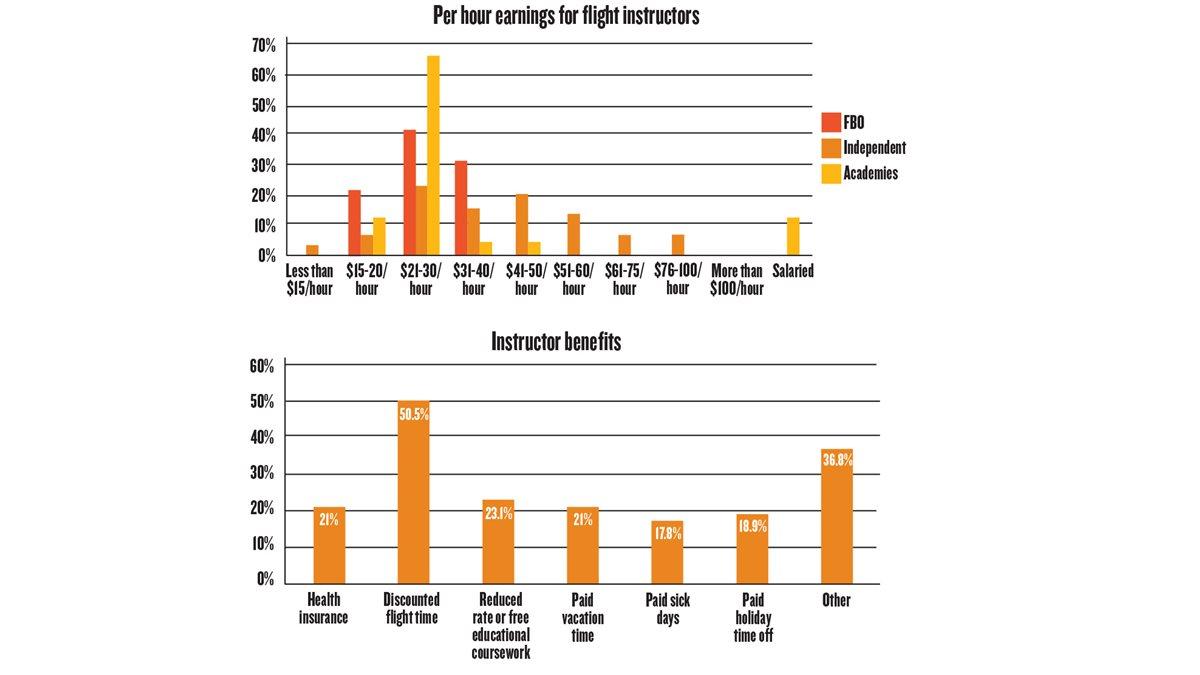Career pilot: In demand
Compensation rising to entice CFIs

With all the giddiness about improved lifestyles at the regionals, another segment of the industry is seeing an upswing in both demand and compensation: flight instruction.
To many pilots, instruction is merely a step on the lowest rung of the career ladder. However, we now have an opportunity for those who enjoy mentoring and developing flying talent as a goal in itself. Neighborhood flight schools, academies, and collegiate-level programs, as well as mega-trainers such as FlightSafety, Simcom, and CAE Simuflite, all have put out the help wanted signs. Those already employed are, in many instances, finding their weeks maxed out.
Compounding the problem for schools are the FAA’s regulations for flight instructors. FAR 61.195 (2)(iii) and (iv) state that a flight instructor who provides training to an initial applicant for a flight instructor certificate must “have held a flight instructor certificate for at least 24 months” and “have given at least 200 hours of flight training as a flight instructor.” The larger training organizations are preparing their customers for a paid position driving jet airplanes. In those schools, it is increasingly difficult to keep fresh instructors around long enough to meet the rule for initial instructor training. Once they earn airline transport pilot hours, off they go to SkyWest or other airlines.
This state of affairs should have special interest for veteran aviators who are looking at a rewarding retirement—spending their free time aboard a Cirrus or Diamond rather than at the fishin’ hole or the nineteenth green.
There is a widely held notion by “veterans” of flight that CFI pay is, frankly, dismal. Memories of pay at $9 per flight hour still linger in the minds of many aviators.
A survey of a few instructors working at Part 61 schools, around the south in particular, reveals that the typical pay for a young CFI is in the range of $22 to $27 per hour. In many instances, that goes for both ground and flight instruction. These CFIs probably spend a lot of time waiting, or have other jobs to fill in the gaps between instructional flights.
The real potential for a decent, stable living and high activity lies with the aviation academies, colleges, and universities. These institutions seem to have an inexhaustible supply of flight students.
One new CFI at Transpac Aviation Academy in Phoenix claims that he is earning upwards of $40,000 in his first year. Benefits, bonuses, and wage increases with tenure and performance add to the salary pot. At ATP Flight School, a CFI enrolled in its airline prep program can earn up to $42,000 annually.
At the collegiate level, fulltime staff instructors at schools like Purdue can pull in $25,000 to $30,000 at the entry level and advance to the $40,000s, and possibly more, at the assistant chief instructor level. This comes with full health, vacation, and retirement benefits. At Western Michigan University, a starting fulltime staff instructor can realize $25,000 to $30,000 and progress to $50,000 and more in management. A full line of benefits comes with the job. At Embry-Riddle Aeronautical University in Prescott, Arizona, show up with an ATP certificate and 2,000 hours of flight instruction and start at the IP-5 level, at $35 per hour—flight and ground. Figure about 30 to 35 hours per week and gross $54,000 annually, or more. Benefits are included.
In a class by themselves are the big-time, nonairline training enterprises. Simcom Aviation Training, with centers located in Florida and Arizona, provides training in turboprop aircraft such as the Pilatus PC–12, Daher TBM series, Beech King Air, and Piper Navajo—as well as jet training in machinery such as the Dassault Falcon 20 and Cessna Citation 500 series. An ATP certificate with a type rating is preferred, although CFIs with a commercial ticket are welcomed to apply. If necessary, the company will “type” and, of course, train the new instructor. Salary can range from $50,000 to $90,000, depending on the type of airplane, and part-time instructors can earn more than $200 daily.
FlightSafety and CAE Simuflite are global organizations that feature high-end training in every business/corporate jet imaginable, pretty much following the same model as Simcom. These companies, too, are looking for instructors to take their clients through to type ratings and to do proficiency flying—up to the Gulfstream V and even larger. Fulltime and part-time job postings for those with an ATP, or a commercial certificate in some instances, are continually being listed with compensation and benefits that are, shall we say, very rewarding—well into the executive range. Add in a type rating on the company to qualify as an instructor, and that package is highly attractive.
If your flight instructor certificate has been hidden away in your wallet for too long and you would like to put it to good use, or if you are looking for a rewarding aviation career path that doesn’t involve shuttling folks hither and yon on someone else’s schedule, then flight instruction could be just the ticket.


